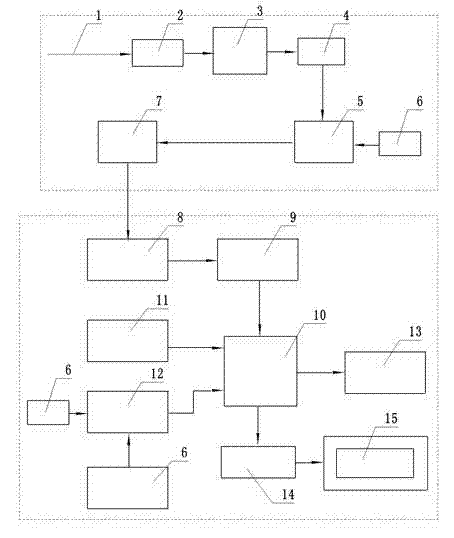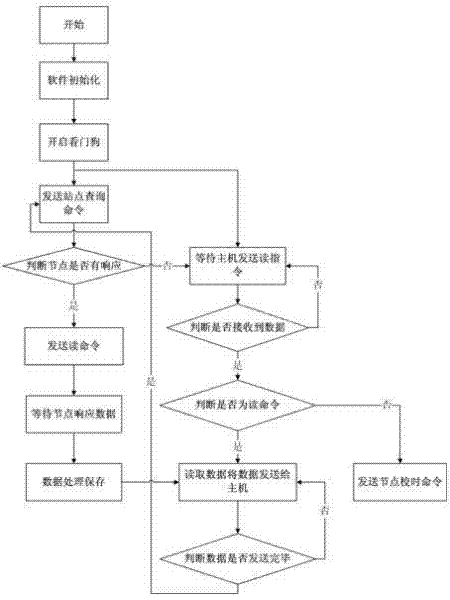Cotton temperature and humidity data automation acquisition and monitoring equipment and method thereof
A technology of automatic collection and monitoring equipment, which is applied in the direction of measuring devices, instruments, signal transmission systems, etc., can solve the problems of low data accuracy and inconvenient monitoring, and achieve the effect of realizing benefits, facilitating decision-making management, and facilitating decision-making management
- Summary
- Abstract
- Description
- Claims
- Application Information
AI Technical Summary
Problems solved by technology
Method used
Image
Examples
Embodiment 1
[0045] Embodiment 1: Referring to the appended figure 1 , a cotton stack temperature and humidity data automatic collection and monitoring equipment, including a control host 15, is characterized in that it also mainly includes three functional modules:
[0046] (1) Temperature and humidity acquisition module: mainly includes temperature and humidity sensor 2, microprocessor MCUⅠ4, analog signal amplifier 3;
[0047] (2) Wireless data transmission module: mainly includes wireless data transmission chip 5, wireless data transmission antenna 7, power-down backup battery 6;
[0048] (3) Wireless data receiving module: mainly includes microprocessor MCUⅡ10, clock chip 11, data storage chip 13, power management chip 12, power-down backup battery 6, wireless data receiving chip 9 and wireless data receiving antenna 8, the data The receiving antenna 8 is connected to the wireless data receiving chip 9, and the microprocessor MCUII10 is connected to the control host 15 through the co...
Embodiment 2
[0054] Embodiment 2: Referring to the attached Figure 1-Figure 6 , a method for automatically collecting and monitoring temperature and humidity data of cotton stacks, mainly comprising the following steps:
[0055] (1) Arranging the required hardware devices:
[0056] (1), the control host 15 storing the control main program;
[0057] (2) The temperature and humidity acquisition module placed in the cotton pile to be monitored: including temperature and humidity sensor 2, microprocessor MCU Ⅰ 4, and analog signal amplifier 3;
[0058] (3) The wireless data transmitting module placed outside the cotton stack to be monitored: including the wireless data transmitting chip 5, the wireless data transmitting antenna 7, and the power-down backup battery 6;
[0059] (4) Wireless data receiving module: mainly includes microprocessor MCUⅡ10, clock chip 11, data storage chip 13, power management chip 12, power-down backup battery 6, wireless data receiving chip 9 and wireless data re...
PUM
 Login to View More
Login to View More Abstract
Description
Claims
Application Information
 Login to View More
Login to View More - R&D
- Intellectual Property
- Life Sciences
- Materials
- Tech Scout
- Unparalleled Data Quality
- Higher Quality Content
- 60% Fewer Hallucinations
Browse by: Latest US Patents, China's latest patents, Technical Efficacy Thesaurus, Application Domain, Technology Topic, Popular Technical Reports.
© 2025 PatSnap. All rights reserved.Legal|Privacy policy|Modern Slavery Act Transparency Statement|Sitemap|About US| Contact US: help@patsnap.com



